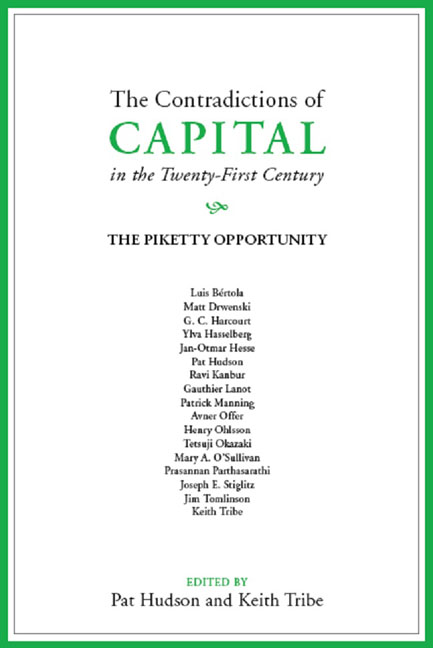5 - French Idiosyncracies
Published online by Cambridge University Press: 16 August 2023
Summary
In his book Capital in the Twenty-First Century Thomas Piketty deploys three sources of evidence: first, aggregate data deduced from national accounts; second, sources related to the distribution of income; and third, evidence concerning the distribution of wealth in the population. In his treatment of income distribution in France, the latter two sources are related to the specifics of tax collection over the last two centuries, and the organized and careful recording of the data in simple and informative tables that can be analysed with a view to drawing aggregate conclusions.
From Piketty’s work two conclusions are clear and undisputed: relative to the inequality experienced in the second half of the nineteenth century, wealth and income inequality were reduced substantially after the Second World War, following the destruction of assets caused by the war. This reduction in both forms of inequality persisted for the next thirty years or so. Piketty focuses on inequality at the top of the income or wealth distribution because these are characterized best in the sources he uses. However, since the 1980s inequality has increased in both dimensions and Piketty’s prediction is that, in the future, it will resemble the inequality that characterized the distribution of income and wealth in the last part of the nineteenth century.
What happens in the first half of the twentieth century is outlined using aggregate evidence drawn from the national accounts, using reconstructed data for the years before 1950, and reporting a measure of aggregate return on capital. This evidence has been the source of some criticism, mostly because of the aggregate nature of the measurement that national accounts provide, and because of the difficulty in accounting for the differences between the three types of measurement in Piketty’s work: income, wealth and capital.
The book does, however, provide a framework for relating these three concepts and supporting the main predictions that are made. The analysis favours the accumulation channel, whereby the value of today’s total output is divided between labour income, capital income and investment (into physical capital). This in turn determines tomorrow’s production.
- Type
- Chapter
- Information
- The Contradictions of Capital in the Twenty-First CenturyThe Piketty Opportunity, pp. 67 - 86Publisher: Agenda PublishingPrint publication year: 2016



